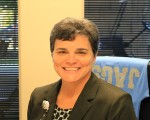by Caitlin Blackmon | staff writer
Walking through the hallways, freshman Chloe Ramirez catches glances of students in what she considers to be inappropriate school attire. It seems as though some girls have decided to wear spaghetti strap shirts, ripped jeans, or shorts that seem to be just too short. Now the question lies in whether or not these students will be asked to change into more appropriate clothing.
“I’d say the biggest challenge related to dress code is the ability for those who enforce it to see everything. There are fewer people inspecting, watching,[and] looking for dress code violations than there are students at this school, in a huge disproportionate way,” assistant principal Steven Magadance said.
Although NEISD does have a dress code policy, there is sometimes difficulty in enforcing it partly because of the student to teacher ratio. It is because of this reason that some students may not feel much pressure to observe the school dress code.

“[Students] probably don’t think of the consequences too much and there’s probably a lot of people that get away with it,” Ramirez said.
There is also the issue of who is forming an opinion of students clothing choices in regards to the gender of the people involved. In some cases, it may be difficult for adult males and/or adult females to decipher whether a male or female student is found in violation of the dress code.
“Most of the dress code issues are ‘girl-related,’ and [relate to] the sensitivity of a girl who may be exposing more parts of their body than they maybe should. The consistency is difficult with the male administrators versus female administrators,” assistant principal Cynthia Rinehart said.
While there is a wide array of dress code violations a student may exhibit, the most frequent offenses seem to be easily observed.
“I think the obvious ones are like big designs on the t-shirt that stick out, or nose rings, obvious things like that. Probably the hair colors, they’re easy to notice too,” french teacher Kacee Saylors said.
When students are caught with violating the dress code policy, there are certain steps that are taken as a result. The student is to report to the main office and is told to change into clothing provided by the school.
“They are given a t-shirt and/or sweat pants to swap out for the inappropriate clothing. They wear that for the remainder of the day, and at the end of the day, they come back and swap it back out. So they have to turn in the inappropriate clothing for the remainder of the day,” Rinehart said.
Dress code violations are not extremely common, with only an average of one or two students a day being sent down to the office to change.
“I would say we probably have one or two [dress code violations] daily. So that’s probably, you know, five, six, seven, maybe 10 a week,” Magadance said.
Because fashion styles often vary depending on the generation, there is typically some kind of alteration every year or so. As clothing styles evolve, various stores also accommodate their clothing sections to meet the consumer demands. This could make it difficult for some people to purchase clothes that are school appropriate.
“You know, I think it has evolved because that’s how styles are. When you buy shorts now, if you go to the store with your daughter and buy shorts. they’re short. I mean it’s very difficult to find clothes that comply to the written dress code,” Rinehart said.
Although some students may want to see more modifications be made to the dress code policy, some changes have already been done just in the past couple years, according to Magadance.
“There was a committee that the district held, and remember the dress code is district-wide. The campus does have some discretion about, you know, not modifying or changing, but making different policies to make it either more compliant or whatever,” Magadance said. “So there’s some campus control, but there was a district-wide committee that talked about changes in the dress code. So there were some changes that were made in the last two years for the school dress code.”

